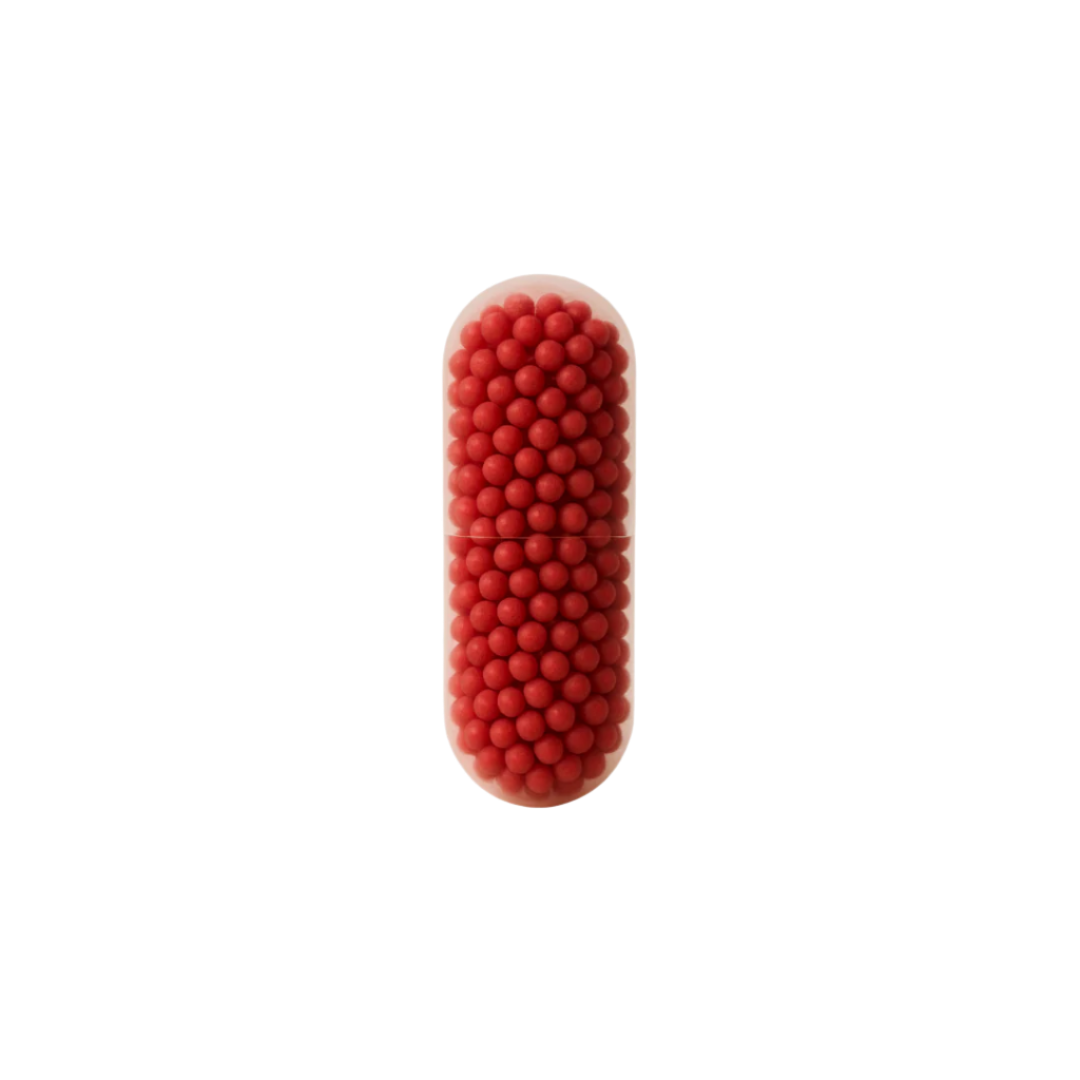Winter Blues, Springtime Lethargy: Why Do We Feel Tired When The Seasons Change?

A 2022 YouGov survey found that 75% of Britons feel tired half the time, most of the time, or all of the time. Only 3% answered none of the time1. These are worrying statistics, especially when you consider how tiredness can severely impact our daily lives. There are plenty of factors that influence why people feel so tired, and in this article we examine one that’s less obvious but affects many - the change of seasons.
You may be wondering, can changing seasons make you tired? The short answer to this question is yes.
A long-term study of seasonal changes on sleep found that seasonal changes impact sleep patterns, with springtime leading to earlier wake times and shorter sleep durations2. Furthermore, daylight savings time and the changing of clocks can lead to you feeling tired. But there is something else inextricably linked to seasonal changes that most definitely can impact your energy levels, your mood, and your health, and that is seasonal affective disorder or SAD.
What is Seasonal Affective Disorder?
SAD is a type of depression that follows a seasonal pattern3. It typically manifests in the autumn or winter months, and diminishes in the spring or summer months4. That’s why it’s called ‘winter depression’5.
While less prevalent than winter-pattern SAD, summer-pattern SAD does exist and can cause depressive episodes during spring and summer months6. Known as ‘reverse SAD’7, it has been linked to springtime lethargy, with some studies pointing to a correlation between it and high suicide rates in spring,8 though further research into the field is required at present.
Seasonal Affective Disorder symptoms
Because SAD is a type of depression, its most common symptoms tend to match those closely associated with clinical depression9. These include:
- Low energy
- Low mood (especially in the mornings)
- Low libido
- Irritability
- Little interest in life
- Sleep problems
Interestingly, winter-pattern SAD symptoms are quite different from summer-pattern SAD symptoms.
Winter-pattern SAD symptoms
Winter-pattern SAD tends to have its own specific symptoms:
- Oversleeping or hypersomnia
- Overeating, especially carbohydrates
- Weight gain
- Withdrawal from social activities10
Those with moderate symptoms are considered to have a milder form of SAD, known as subsyndromal SAD or ‘winter blues’11. However, this label is not used consistently within the scientific community, and you should avoid being too dismissive of such symptoms, especially if they are taking a toll on your day-to-day life.
Summer-pattern SAD symptoms
In contrast to winter-pattern SAD, the symptoms of summer-pattern SAD tend to be:
- Insomnia or difficulty sleeping
- Poor appetite and not eating enough
- Weight loss
- Restlessness12
It’s worth pointing out that in both SAD types, sleep patterns are detrimentally impacted, and that in turn plays a critical role in energy levels and feelings of tiredness.
Causes of Seasonal Affective Disorder
The specific cause of SAD is yet to be determined, though it is frequently linked with reduced sunlight exposure during the winter months13. There are a number of reasons why this is the case:
- Reduced serotonin levels: In the winter months, people with SAD have 5% more SERT, a protein that influences serotonin levels. Sunlight keeps SERT levels low, but in winter, with less sunlight exposure, SERT levels rise. Higher SERT levels result in lower serotonin levels, which can result in depression14.
- Overproduction of melatonin: Melatonin is a hormone produced in response to darkness, and is considered to help align our sleep-wake cycles with night and day. It essentially plays a role in helping us fall asleep15. People with SAD have been found to have increased levels of melatonin to match the increased number of hours of darkness, and this in turn might explain the symptoms of oversleeping and feelings of fatigue and tiredness16.
- Disrupted circadian rhythm: As a result of reduced sunlight, the body’s internal clock can be disrupted, leading to symptoms of SAD including low energy levels and low mood17.
Summer-pattern SAD has also been linked with high pollen counts, with mood and energy particularly affected on high pollen days, though at the moment this remains a correlation that requires further investigation18.
Treatment of Seasonal Affective Disorder
Understanding the causes of SAD can help with its treatment. In the UK, the National Institute for Health and Care Excellence advocates treating SAD the same way as you would depression19. A combination of the following four approaches may be used.
- Lifestyle changes: This could involve trying to get as much sunlight as possible, exercising regularly, eating a healthy and balanced diet, and learning how to manage stress20.
- Counselling: Counselling by way of CBT or Cognitive Behavioural Therapy can help provide you with the tools necessary to manage stress. For example, it can help you to identify negative patterns and address issues or problems you’re facing21.
- Medication: This may include prescription antidepressants to correct the chemical imbalance resulting in SAD, or vitamin D supplements to make up for the reduced exposure to sunlight22.
- Light therapy: Light boxes are essentially lamps that reproduce sunlight to help lift mood. You may also be able to use light alarms that mimic the sun rising to help you wake up. Bear in mind that light therapy helps in the short-run, and so you will still experience symptoms of SAD come the next season23.
Next Steps
As mentioned earlier, seasonal changes can impact sleep patterns and duration, especially since light can affect sleep. If you find yourself struggling with low energy when the seasons change, then you may want to observe your mood and changes in habit to determine whether you may be at risk for SAD.
If your symptoms are mild, and you simply want to increase your energy levels in the morning, then consider taking B・SYNC ON wake-up capsules. They’re the world’s first clinically proven sleep-inertia supplements designed to help you wake up with ease and energy. If, however, you find yourself experiencing symptoms that match those of SAD, then you should consider visiting your GP and seeking help.
Sources
- https://yougov.co.uk/topics/society/articles-reports/2022/01/11/one-eight-britons-feel-tired-all-time
- https://www.nature.com/articles/s41746-021-00435-2
- https://www.mayoclinic.org/diseases-conditions/seasonal-affective-disorder/symptoms-causes/syc-20364651
- https://www.nhs.uk/mental-health/conditions/seasonal-affective-disorder-sad/symptoms/
- https://www.nhs.uk/mental-health/conditions/seasonal-affective-disorder-sad/overview/
- https://www.ncbi.nlm.nih.gov/pmc/articles/PMC6746555/
- https://journals.healio.com/doi/abs/10.3928/0048-5713-19871001-10
- https://www.sciencedirect.com/science/article/abs/pii/S0165032709002249
- https://www.nhs.uk/ipgmedia/national/Royal%20College%20of%20Psychiatrists/Assets/SeasonalAffectiveDisorder.pdf
- https://www.nimh.nih.gov/health/publications/seasonal-affective-disorder
- https://www.apa.org/news/press/releases/2013/02/seasonal-disorder?partner=nlm
- https://my.clevelandclinic.org/health/diseases/9293-seasonal-depression
- https://www.nhs.uk/mental-health/conditions/seasonal-affective-disorder-sad/overview/
- https://www.ncbi.nlm.nih.gov/pmc/articles/PMC4673349/
- https://pubmed.ncbi.nlm.nih.gov/25705578/
- https://academic.oup.com/book/24578/chapter-abstract/187837936?redirectedFrom=fulltext
- https://www.nhsinform.scot/illnesses-and-conditions/mental-health/seasonal-affective-disorder-sad#causes
- https://www.ncbi.nlm.nih.gov/pmc/articles/PMC6800045/
- https://www.nice.org.uk/guidance/ng222
- https://www.nhs.uk/mental-health/conditions/seasonal-affective-disorder-sad/treatment/
- https://www.ncbi.nlm.nih.gov/pmc/articles/PMC4673349/
- https://www.ncbi.nlm.nih.gov/pmc/articles/PMC4673349/
- https://www.nhs.uk/mental-health/conditions/seasonal-affective-disorder-sad/treatment/
- https://www.nature.com/articles/s41598-021-98376-z







